Kumbh Mela: 400 million people to take part in massive Hindu festival
WATCH: What is Kumbh Mela? (2019)
- Published
The Hindu festival of Kumbh Mela is celebration like no other.
It's the largest religious gathering in the world, with more than 400 million people expected to take part.
Kumbh Mela only happens once every 12 years, taking place at the meeting of three important rivers - the Ganges, the Yamuna and the mythical Saraswati.
Hindus travel from all over the world to participate, including from the UK.
Read more about the festival here.
What is the festival of Holi?
- Published22 March 2024
What is the Hajj pilgrimage?
- Published26 June 2023
What is Kumbh Mela?
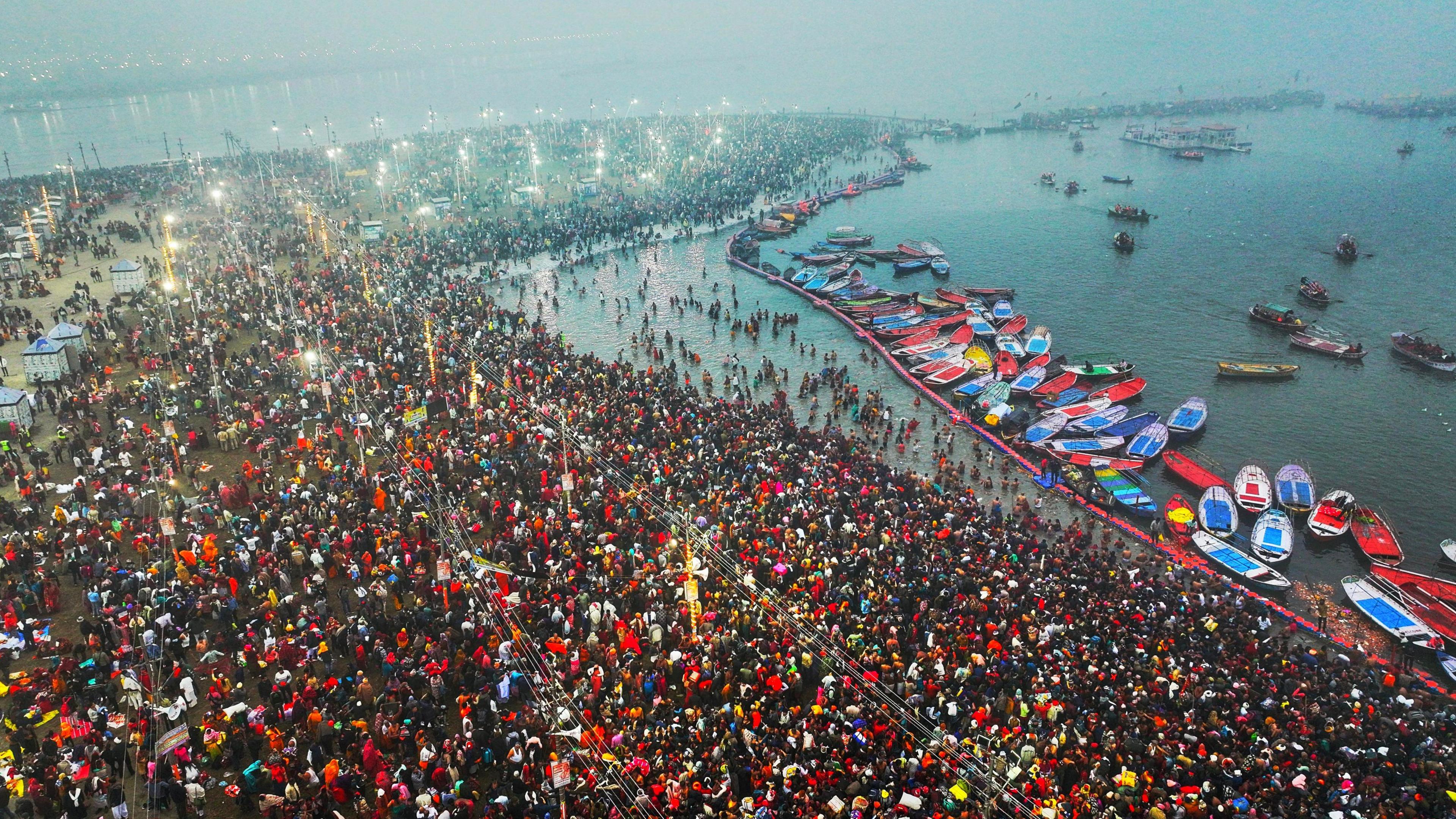
Hundreds of millions of pilgrims are expected to take part in ritual baths at the site of India's sacred Ganges river, Yamuna river and the mythical Saraswati during the six-week Hindu festival
Held in the north Indian city of Prayagraj, Kumbh Mela is one of Hinduism's most sacred pilgrimages.
A pilgrimage is a journey that is made for a spiritual reason.
As part of the festival, thousands line up on the banks of the Ganges and the Yamuna, where the rivers meet, believing the water will wash away sins and help them to avoid evil.
Some also believe that the water can cure illness and disease.
The Ganges and Yamuna rivers also share a site with the mythical Saraswati River, a manifestation of the Hindu goddess of the same name.
When pilgrims come to bathe in the Ganges and Yamuna, they believe they are bathing in the Saraswati River too - even though it's not physically present.
These rivers are very significant in Hinduism, making up three of the seven holy rivers - with the holiest being the Ganges.
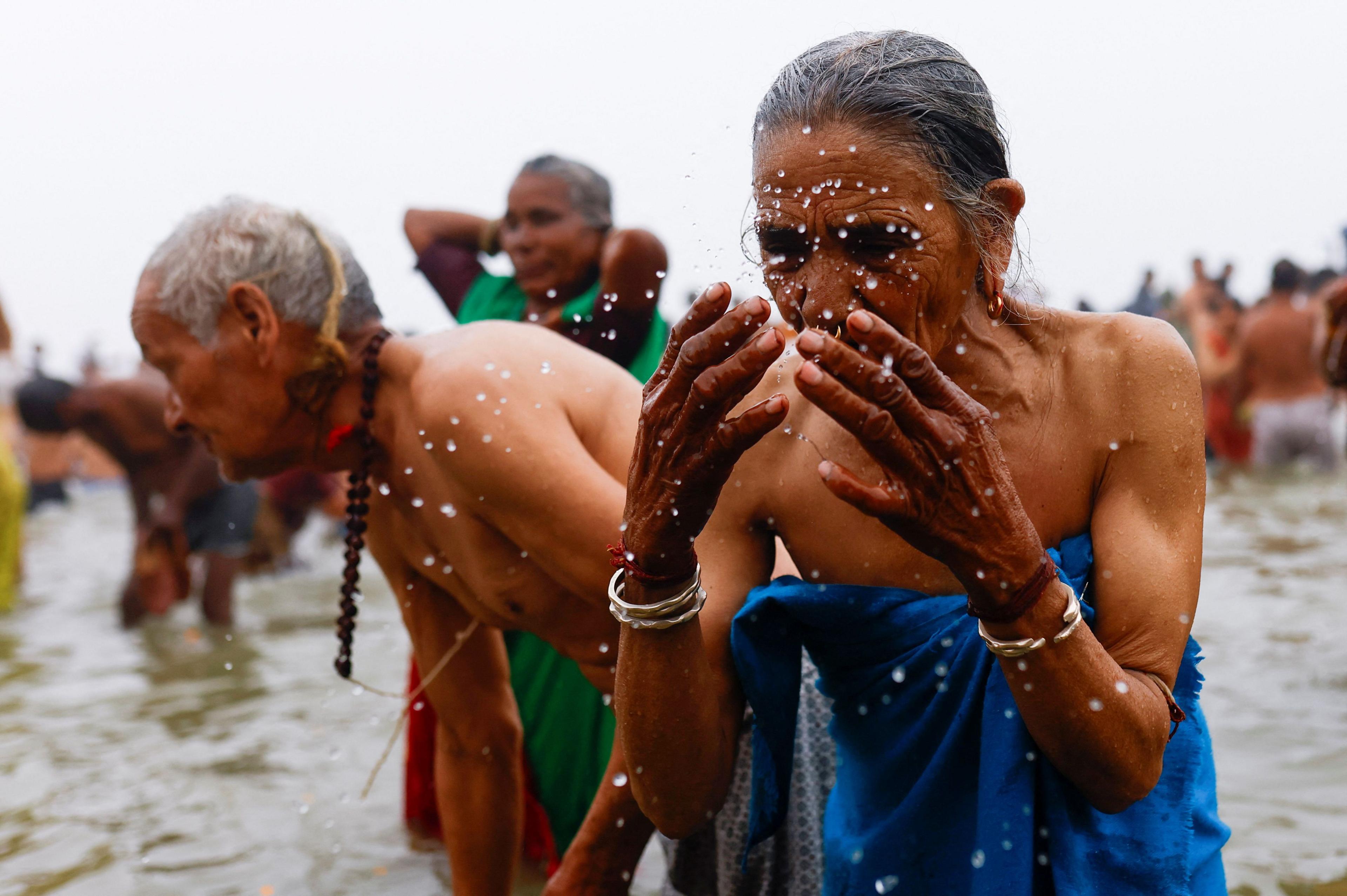
Why is Kumbh Mela so important for Hindus?
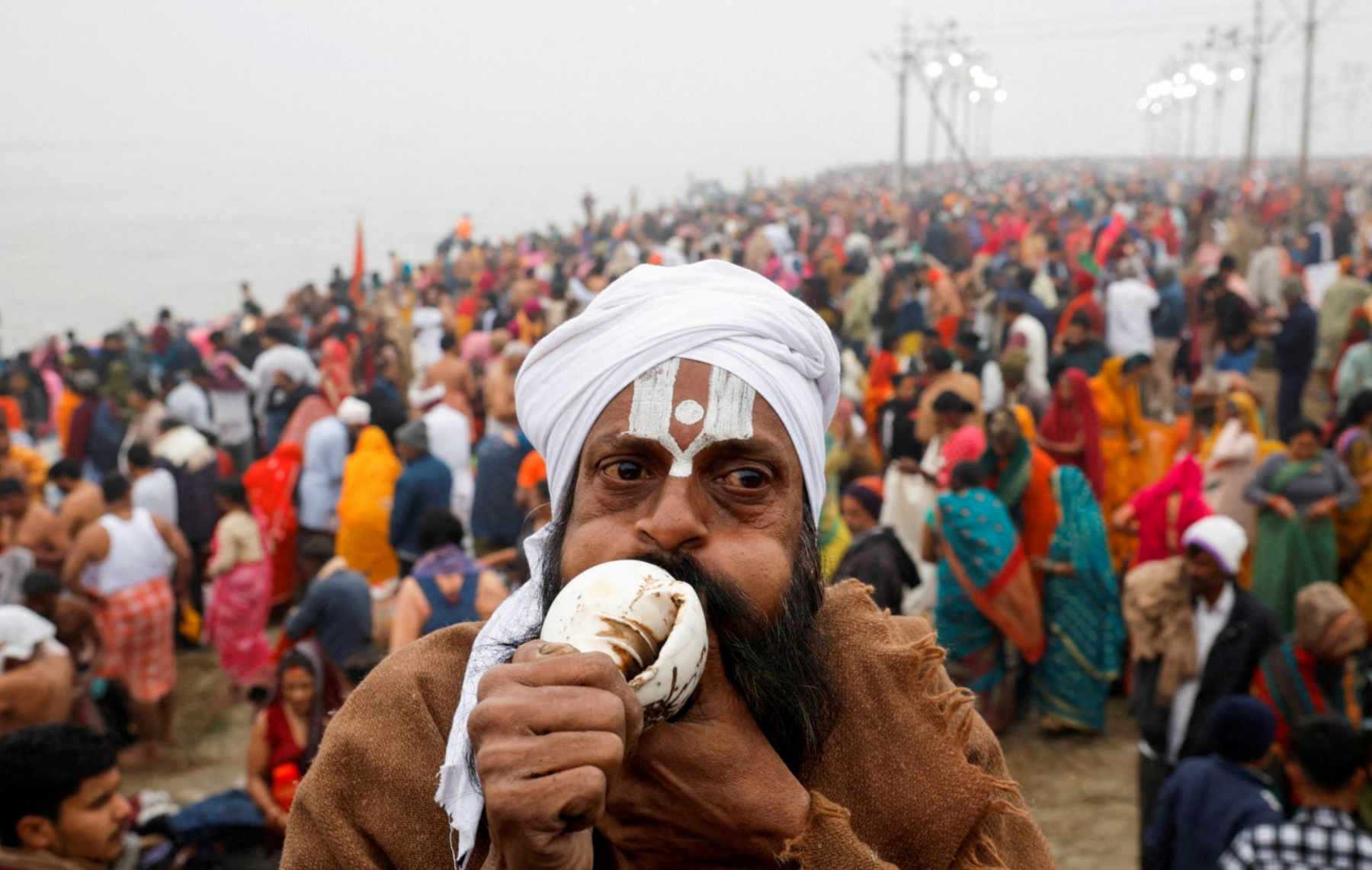
A Sadhu or a Hindu holy man blows a conch as he prays on the day devotees take a holy dip
Prayagraj - where the festival takes place - was chosen because it's believed to be one of four places where the drops of eternal life were spilled from an urn being fought over by Hindu gods and demons.
Visitors often have to wait a long time for the opportunity and only get to bathe for a few seconds.
Pilgrims from all sections of the faith will take part, including religious men and women known as sadhus and sadhvis.
Many people travel to see the sadhus at the festival, as they perform prayers, give blessings and lecture on Hindu teachings.
The largest gathering of bathers is expected on 29 January, when it's thought as many as 60 million people could go for a dip in the holy rivers.
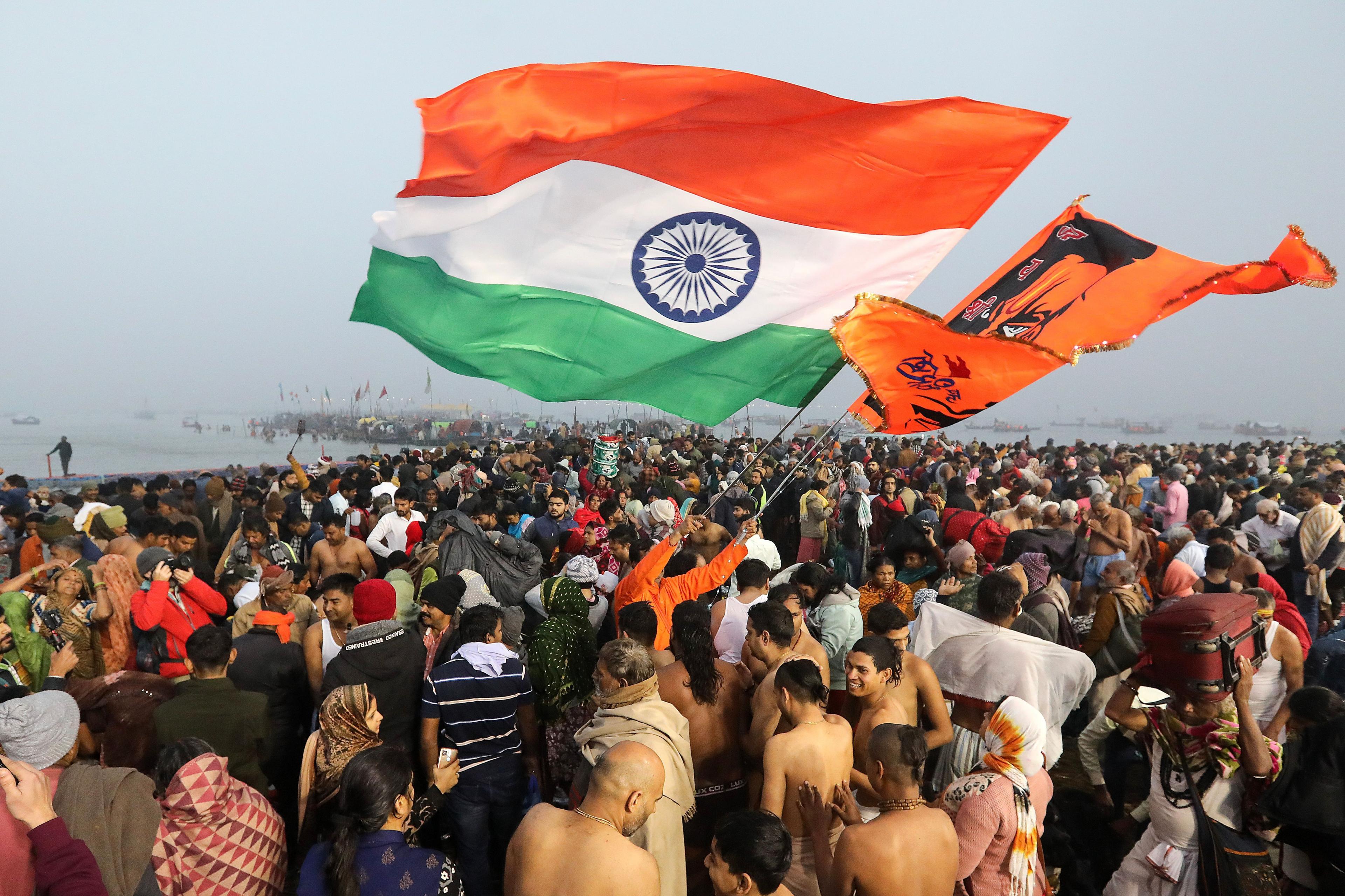
A man waves an Indian national flag as Hindus gather to take a holy bath on the first day of the Kumbh Mela festival
The Kumbh Mela in numbers
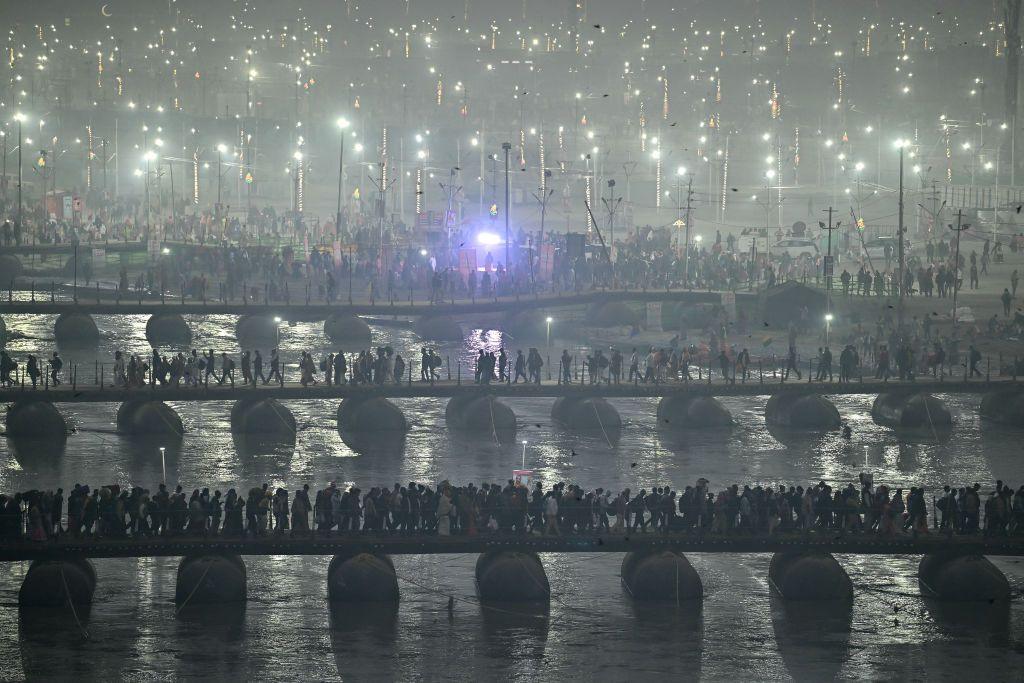
Hindu pilgrims carrying their belongings walk over floating pontoon bridges to reach the festival
The event spans 40 square kilometres, comparable to 4,000 football pitches, where organisers have created a massive city of 160,000 tents.
Much like a music festival, there are areas for food, merchandise, and entertainment as well as tents for religious leaders to give readings.
Visitors can fly in, get the train or use the 400km (248.5 miles) of freshly tracked road, including 30 floating bridges to get to the festival.

The tents of the temporary city on the first bathing day of the Kumbh Mela festival
Meanwhile, electric substations, clean water supply lines, 150,000 toilets and over 200km of sewage lines have all been built too.
Water quality monitoring systems have been installed along the river banks to track pollution.
And, if anyone gets ill, there are doctors on site and temporary hospitals.
Security will be overseen by a 50,000-strong police force, aided by thousands of AI-enabled cameras and drones that will monitor crowds from above.
Radio Frequency Identification wristbands and mobile apps will track the pilgrim numbers and size of crowds and, for the first time ever at such a large scale event, facial recognition technology will be used to make sure people are safe.
It's estimated $815m (£661m) has been spent in total on the organisation and building needed for the festival.
